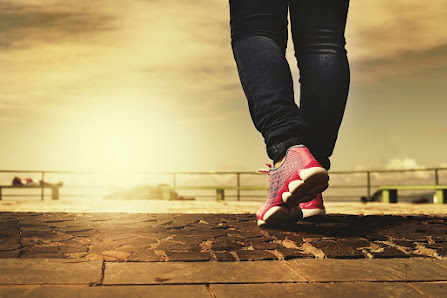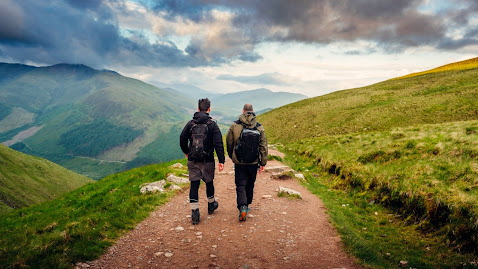The Complete Guide to Exercise for Overweight Beginners
Introduction: Why is it Important to Exercise?
The benefits of exercise are well-documented and it's important to make sure that you're getting enough exercise every day. Aside from the obvious physical benefit of exercising, there are the benefits that it provides to your cardiovascular system and your mental health.
A few ways to ensure you're getting the recommended amount of exercise are by visiting a gym, going for a run, cycling throughout your workday, or participating in yoga or stretching exercises at work.
But, what if you’re overweight or morbidly obese and uncomfortable doing these things? Many people avoid the gym or jogging on the streets as they feel out of their comfort zone and insecure about how they look. If this sound like you, read on to find the best way to get started.
How to Start Exercising as an Overweight Beginner
The gym can be an intimidating place, especially if you are out of shape. You will often find yourself surrounded by bodybuilders, strength trainers and fitness enthusiasts. Whilst they are usually just focusing on their own workouts, it can feel like they are watching and judging you for not being in great shape. This is the main reason that overweight people are put off joining a gym or visiting regularly.
In an ideal world, you would be able to ignore this and get on with your workout but many find that just the thought of going to the gym is daunting. You may be able to get around it by visiting off-peak or in the middle of the night f you belong to a 24-hour gym but there are easier ways to get started.
If you are overweight and concerned about your health, the best thing that you can do is just to jump in and get started with something that is low intensity, easy to do and scaleable. Simply put, get walking!
Walking is hugely beneficial for your cardiovascular system, joint mobility, muscle strength and mental wellbeing. On top of all this, it is an easy, enjoyable way to lose body fat.
Equipment Needed
All you really need is a good pair of walking trainers to get started but there are a few other things that can make the experience a lot more enjoyable.
1) Clothing. If you are overweight and doing a lot of walking, chaffing can become a real issue. Invest in some compression shorts or cycling shorts to wear underneath your normal clothing. This can keep everything in place and stop your inner thighs from rubbing together. If you are planning to walk during extreme weather, make sure that you have waterproof or thermal wear if required.
2) Footwear. It is worth investing in a decent pair of trainers or walking boots. Make sure that they are a comfortable, secure fit with a well-cushioned sole. If you opt for boots, invest in some comfortable walking socks to avoid initial blisters as you wear them in.
3) Entertainment. For many of us, the local scenery on a daily walk can be uninspiring. If you have a smartphone, download your favourite music or podcasts. Ebooks are another great option as you can immerse yourself in them and eat up the miles.
4) Monitor. It is a good idea to monitor your workouts so that you can track progress and push yourself each week. This can be done on a smartphone, smartwatch or fitness tracker. You can measure your progress by distance, speed or time and try to improve on it with every walk.
Walking for weight loss - a step-by-step guide
Planning
For this plan, we are going to be walking five days a week leaving two days for rest. You can walk on weekdays and take weekends off or split your rest days up if you prefer. The first week will be easygoing to get your body used to daily movement and to gauge your current ability. Aim for five walks around your local neighbourhood starting with a couple of 20-30 minute walks and gradually increasing throughout the week. So not worry about pace or distance at this stage but try to get a feeling of your current ability so that you can plan for the following week.
Once you have completed the first week, it is time to start making things more interesting. Download the AllTrails app, you do not need the pro version as the free version offers everything for amateur walkers.
Here you will find local walking routes often with points of interest. If there are no routes near you, download a route planning app so that you can create your own. Try to get a list of 8-12 local routes that are within your capabilities and select five for the following week.
Try to spend every Sunday evening planning the routes for the week ahead so that you know exactly what you are doing every day. This will help you to keep motivated and stick to your targets.
After the second week, you can plan further ahead. Set yourself targets for longer distances or try to cut down your km/h if you are pushed for time each day.
Execution
The best time to go for a walk is first thing in the morning. If you are an early riser, set off at about 5am. The streets are quieter, the air is fresher and it sets you up for the day. If you can complete a long walk early in the morning, after a couple of days, you will find that you have much more energy and that your eating habits improve as your body craves nutrition rather than empty carbohydrates.
It can take a week or two to get into your rhythm, especially if you are forcing yourself to get up early in the day, but it quickly becomes a habit making it much easier. If you can get through the first couple of weeks, you will find it all gets much easier, even if you are increasing the distance or improving your time.
Nutrition
Good nutrition is really going to help you improve your walking pace, your stamina and your overall health much quicker. There is no point pushing yourself every morning only to go and ruin it with a bucket of fried chicken every afternoon. The good news is, that eating well becomes second nature when you start exercising.
Your body starts to crave nutrition to replenish microtears in the muscles, repair joints and fuel up for the next workout.
A diet rich in lean protein such as chicken or fish is going to keep hunger away. Healthy fats found in olive oils and avocados are great for improving your energy levels and heart function. Try to get your carbohydrates from green vegetables, snack on fruit and drink plenty of water.
Eating little and often is the best way to keep your metabolism up and keep cravings away.
Supplementation
It is virtually impossible to get all of your RDA of vitamins and minerals from food alone so it is worth investing in a good multivitamin supplement. You don’t have to spend a lot of money but avoid the cheaper end of the market. Look for a ‘slow-release’ vitamin supplement that covers all of your bases. You will not feel the full benefit for a week or two until levels build up in your bloodstream. After a while, you will notice that you are more alert, your mood is improved and you have much more energy.
If you do not eat a lot of fish or nuts, it is worth taking a fish oil supplement. The fatty acids in these supplements are great for cognitive support, improving your organ function and increasing energy levels.
For the vegans or vegetarians amongst us, a good vegan protein powder is great for optimal recovery after a long walk.
How to scale up your walking for fat loss
After the first week of local, neighbourhood walking, set a daily goal suitable for your ability. This can be anything from 1k to 12k. You can scale up a few different ways…
Adding distance:
This is the obvious way to improve your fitness and stamina. You can try to add 1k per week to your walks until you can comfortably walk 10-12k per day. This can be quite time-consuming but with a good ebook, it can also be very enjoyable.
Improving time:
If you are restricted by time due to work or family commitments, you can try to stick to a 2-5k walk and try to improve your pace each week. A good fitness tracker is great for this or, if you are walking the same route every day, just use a stopwatch to track your overall time.
As you get fitter, you may choose to add some jogging or even sprints to part of your walk. Ramping your heart rate up for 20 seconds, three times on each walk can seriously boost your metabolic rate for the day leading to faster fat loss.
Tougher terrains:
If you are lucky enough to live near hills or mountains, try adding some steep terrain to your walks. This will help to build muscles in your legs and improve your cardiovascular health.
Conclusion
Walking is the best way to lose fat if you are an overweight beginner. It is the easiest form of exercise, you do not need any special equipment, it is free and it can be very enjoyable. By walking early in the morning, you can clear your head, plan your goals for the day and give yourself an energy boost.
The benefits of walking daily go way beyond just fat loss. You will experience more energy, a better mood and healthier eating habits. On top of all of this, you could be adding years on to your lifespan.





